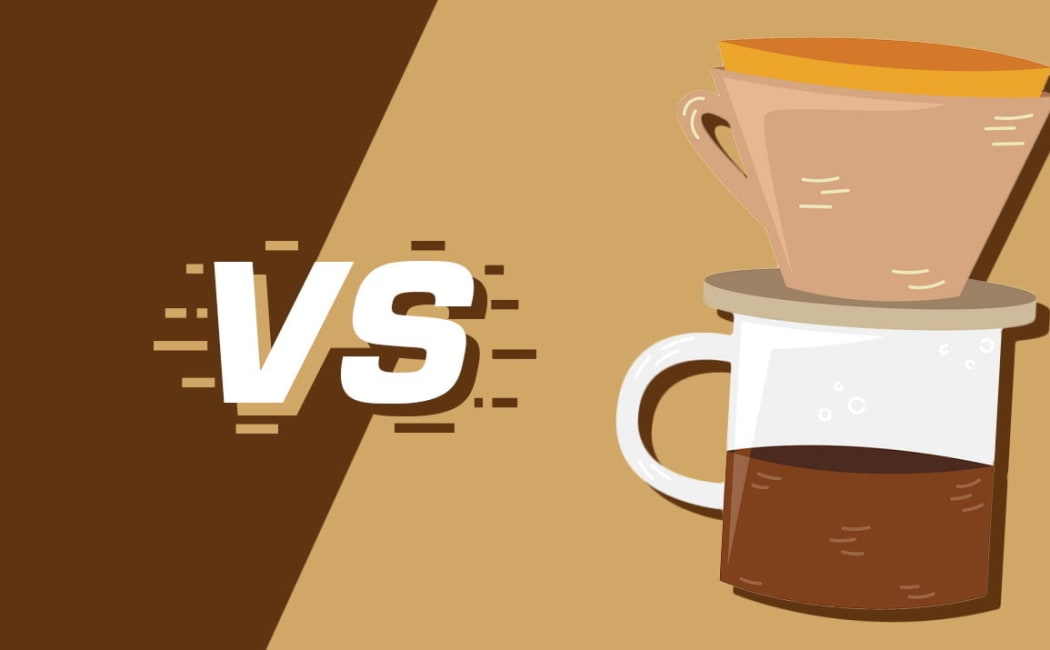Pour-Over vs French Press: Which Coffee Method Is Easier?

Introduction
Every coffee lover at some point asks: “Which brewing method is easier — pour-over or French press?” These two manual brew styles are among the most popular at home. They differ in flavor, technique, grind size, cleanup, and how much effort they require. In this guide, we compare pour-over and French press, especially focusing on ease of brewing, so you can decide which method is right for your morning cup.
What Are They?
French press is an immersion method: coarse coffee grounds steep in hot water for several minutes, then a plunger with a metal mesh filter pushes grounds down. Pour-over, on the other hand, uses a cone or dripper, paper filter (or sometimes reusable filters), and hot water is poured over grounds in a controlled manner so water drains through by gravity. Each method brings different flavor and requires different steps. :contentReference[oaicite:0]{index=0}
Grind Size, Water Temperature & Ratio
- Grind Size: French press works best with coarse grind (chunks rather than fine), to avoid too many fines and bitterness. Pour-over uses medium to medium-fine grind to allow for steady flow. :contentReference[oaicite:1]{index=1}
- Water Temperature: Both methods benefit from water around 90-96°C (195-205°F). Too hot or too cold affects extraction. :contentReference[oaicite:2]{index=2}
- Coffee-to-Water Ratio: French press often uses slightly more grounds per water (stronger, robust taste), whereas pour-over is good for precision and lighter, cleaner cups with balanced ratio. :contentReference[oaicite:3]{index=3}
Ease of Use: Step by Step Comparison
- Setup: French press setup is minimal — you need the French press, coarse ground coffee, hot water. Pour-over requires dripper, filter, kettle (ideally with precise pouring spout), and more attention to arrangement. :contentReference[oaicite:4]{index=4}
- Brewing process: With French press you steep for about 4 minutes then plunge. With pour-over you often bloom (wet grounds first), then pour water in stages, control pour speed, and manage flow. More steps. :contentReference[oaicite:5]{index=5}
- Hands-on attention: French press is more forgiving: once water is added you let it steep, not much active involvement. Pour-over demands control over pouring rate and pattern. :contentReference[oaicite:6]{index=6}
- Cleanup: French press needs cleaning of plunger and mesh filter, washing out grounds which can be messy. Pour-over cleanup is often simpler: discard paper filter, rinse dripper. :contentReference[oaicite:7]{index=7}
Brew Time & Speed
In total time from heating water, grinding beans, and brewing, both methods can take about **3 to 5 minutes**, depending on tools. French press steeping usually around 4 minutes plus prep. Pour‐over can be similar but you spend more time actively pouring and watching the brew. If speed and minimal effort matter, French press tends to win. :contentReference[oaicite:8]{index=8}
Flavor Profile & Texture Differences
The two methods don’t just differ in ease, but also in how your coffee will taste and feel. Pour-over tends to deliver a cleaner, brighter cup, highlighting floral, fruity notes and acidity. French press gives a richer, heavier body, more oils, and often a more robust taste with sediments. If you like clarity, pour-over is for you; if you like strength and fullness, French press will likely satisfy. :contentReference[oaicite:9]{index=9}
Which Is Easier for Beginners?
If you are new to brewing your own coffee, French press is generally easier to start with. It requires fewer precise actions, less equipment, and fewer steps. Pour-over has a steeper learning curve because you’ll need to master pouring technique, flow control, and possibly invest in better tools like a gooseneck kettle, scale, or quality dripper. :contentReference[oaicite:10]{index=10}
Cost and Equipment Considerations
- Equipment cost: Basic French press models are often affordable. Pour-over setup becomes more expensive if you get specialized drippers, precise kettles, or high-quality filter papers. :contentReference[oaicite:11]{index=11}
- Filter supplies: French press uses a metal mesh (reusable), while pour-over often relies on paper filters (ongoing cost) or reusable filters (more expensive upfront). :contentReference[oaicite:12]{index=12}
- Grinder quality: To get best results, pour-over benefits more from consistent finer grind; French press less demanding on grind uniformity, though coarse grind still matters to avoid over extraction. :contentReference[oaicite:13]{index=13}
Final Verdict: Which One Is Easier?
For most people just starting out or who want good coffee with minimal fuss, French Press is the easier method. It demands less precise pouring, fewer specialized tools, and is more forgiving if you make small mistakes. However, if you enjoy the ceremony, precision, and the ability to tweak every variable for flavor clarity, then Pour-Over offers more control — but it comes with more effort and focus. The “clean cup” and nuanced taste of pour-over is rewarding once you get past the learning curve.
Summary
To compare: French press is ideal if you want bold, full-bodied coffee with minimal effort. Steps are simple: coarse grind, hot water, steep, plunge. Pour-over is ideal if you want clarity, cleaner flavor, and you don’t mind investing a little more time, tools, and attention to detail. Choose French press for ease and richness. Choose pour-over for precision and flavor subtleties. Either way, fresh beans and the right grind will make a big difference.
